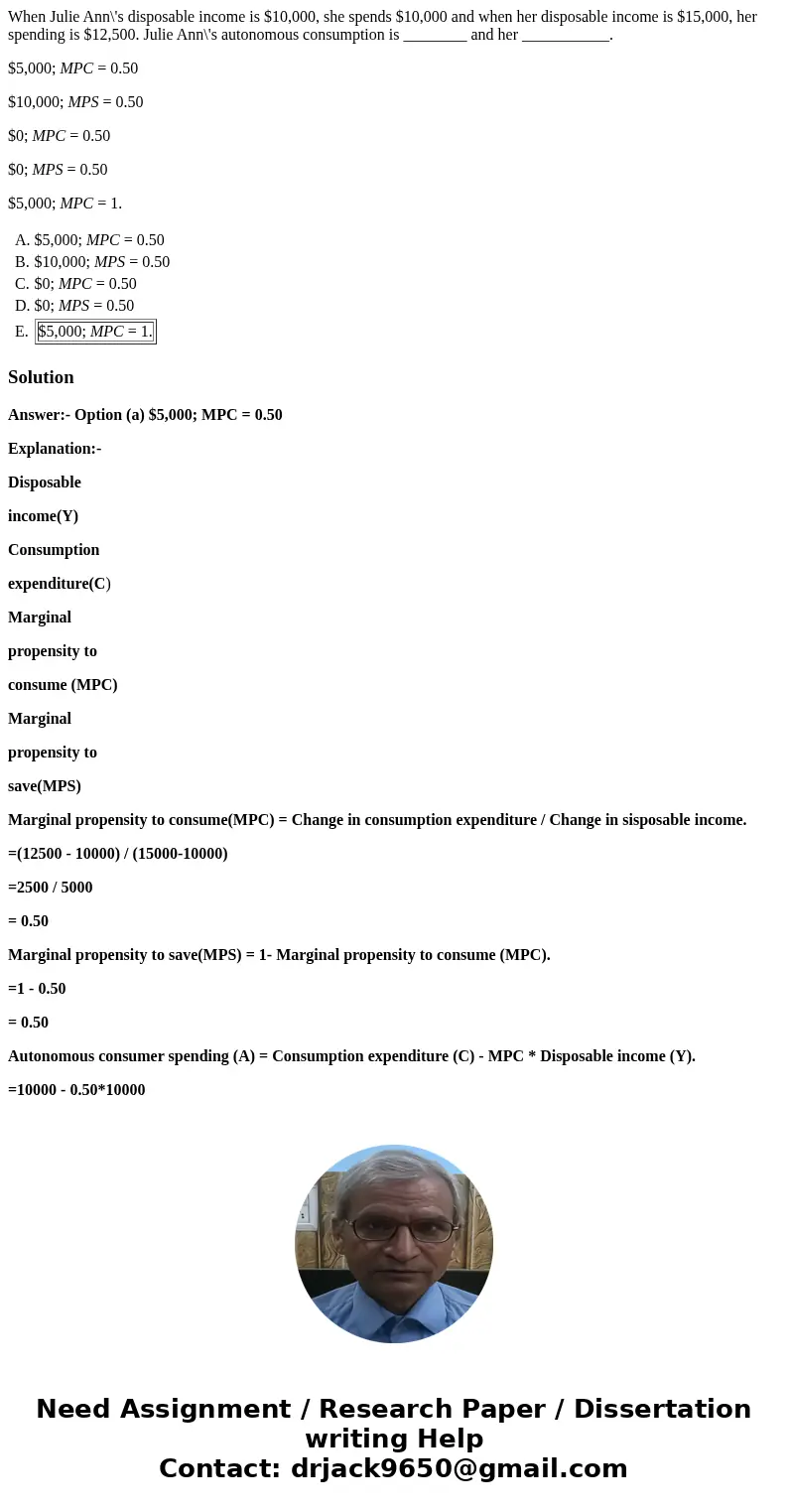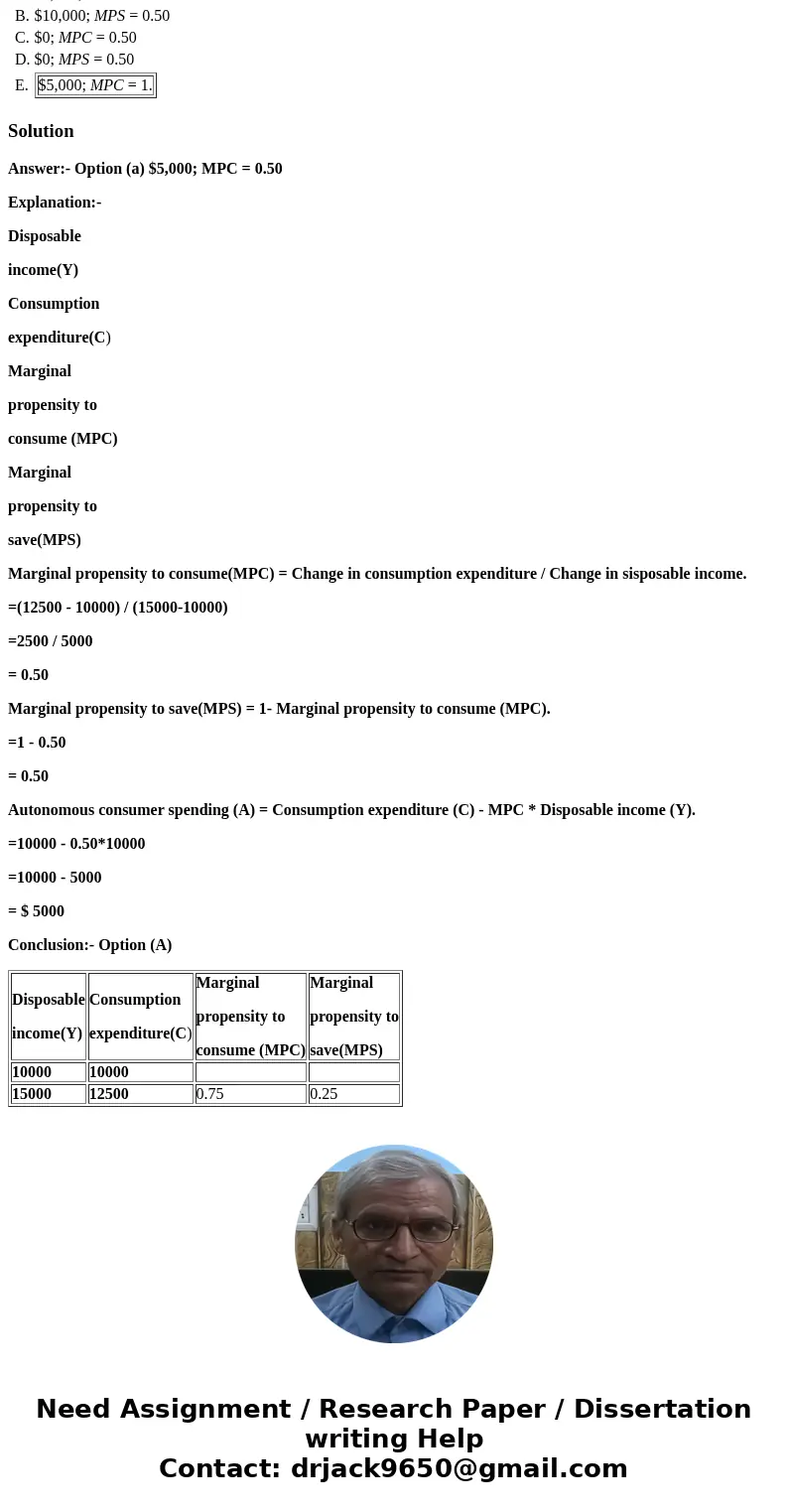When Julie Anns disposable income is 10000 she spends 10000
When Julie Ann\'s disposable income is $10,000, she spends $10,000 and when her disposable income is $15,000, her spending is $12,500. Julie Ann\'s autonomous consumption is ________ and her ___________.
$5,000; MPC = 0.50
$10,000; MPS = 0.50
$0; MPC = 0.50
$0; MPS = 0.50
$5,000; MPC = 1.
| A. | $5,000; MPC = 0.50 | ||
| B. | $10,000; MPS = 0.50 | ||
| C. | $0; MPC = 0.50 | ||
| D. | $0; MPS = 0.50 | ||
| E. |
|
Solution
Answer:- Option (a) $5,000; MPC = 0.50
Explanation:-
Disposable
income(Y)
Consumption
expenditure(C)
Marginal
propensity to
consume (MPC)
Marginal
propensity to
save(MPS)
Marginal propensity to consume(MPC) = Change in consumption expenditure / Change in sisposable income.
=(12500 - 10000) / (15000-10000)
=2500 / 5000
= 0.50
Marginal propensity to save(MPS) = 1- Marginal propensity to consume (MPC).
=1 - 0.50
= 0.50
Autonomous consumer spending (A) = Consumption expenditure (C) - MPC * Disposable income (Y).
=10000 - 0.50*10000
=10000 - 5000
= $ 5000
Conclusion:- Option (A)
| Disposable income(Y) | Consumption expenditure(C) | Marginal propensity to consume (MPC) | Marginal propensity to save(MPS) |
| 10000 | 10000 | ||
| 15000 | 12500 | 0.75 | 0.25 |


 Homework Sourse
Homework Sourse